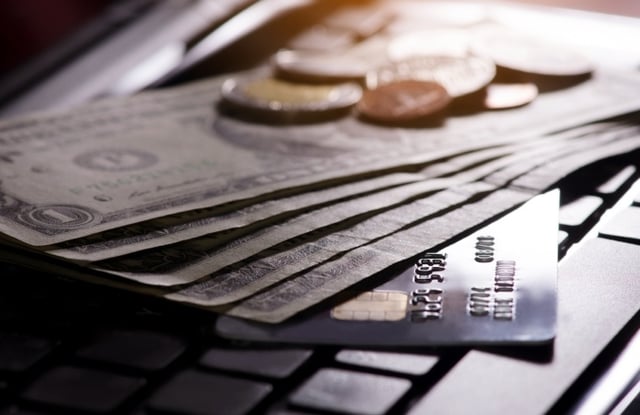 The New Normal
The New Normal
You walk into a grocery store, pick up the few things you’re missing for tonight’s dinner and head to checkout. The cashier rings up your groceries and you reach for your wallet…will you take out a debit card, a credit card or cold, hard cash?
If you’re like a growing number of Americans, you probably find yourself reaching for that debit card more and more often.
According to the Federal Reserve’s "Payments Study 2016", Americans made 33.8 billion credit card payments in 2015, compared to a staggering 69.5 billion in debit card payments, which includes payments with prepaid and non-prepaid cards. The study’s findings are based on analysis of transactional data supplied by financial institutions and payment companies, such as card networks and processors.
What’s Driving this Trend?
With the average American household credit card debt amounting to just over $16,000 -- a 10% increase from what it was 10 years ago -- it seems more Americans are attempting to put controls around their spending by using debit cards for everyday purchases. This trend also lines up with legislation passed by the Obama administration in 2009. The Credit CARD Act makes it more difficult for those under 21 to get a credit card in the first place, and it appears to have been successful in doing that. According to a 2015 Gallup poll, just 65% of millennials have a credit card while 78% of Gen Xers and 83% of baby boomers are credit card holders.
Cash No Longer King?
Despite the uptick in debit card usage, Americans are far from abandoning their credit credits all together. When it comes to big-ticket items, Americans still overwhelming choose to use their credit cards, which often offer incentives like cash back, travel credits and significantly higher levels of fraud protection. Credit cards also have the added benefit of helping consumers establish credit histories and higher credit scores, which in turn helps them get better interest rates on things like home and car loans. In 2015 alone Americans spent almost $3.16 trillion on credit card purchases compared to $2.56 trillion through debit card purchases. Both numbers represent an annual increase of 7% from 2012 through 2015.
It’s on the smaller purchases, including those under $5, that consumers are increasingly more likely to use a debit card as opposed to another method of payment, including cash. Last year 27% of cardholders used their debit cards to make small purchases up from 22% from 2014, according to a recent survey by CreditCards.com.
In fact, Euromonitor International, a market research company which has tracked consumer paying habits for several decades, announced that 2016 marked the first year consumers throughout the world spent more money through credit and debit cards than in cash. Though this didn’t come as a surprise to those following the numbers, as the trend has been headed in this direction for the last two decades, it does mark an important milestone in the decline of King Cash around the globe.
Along with an increase in debit card usage typically comes an increase in fraud. Keep your cardholders’ personal information safe, while maintaining low levels of customer disturbances with the help of Rippleshot Sonar.


